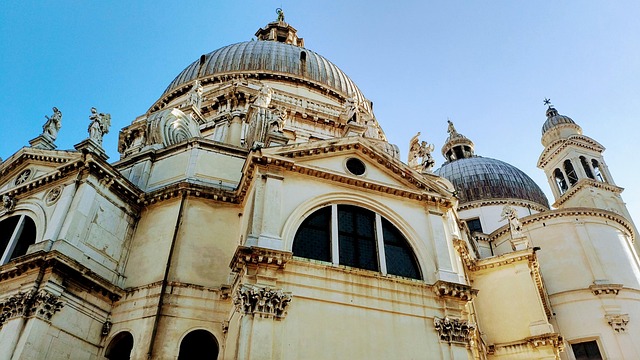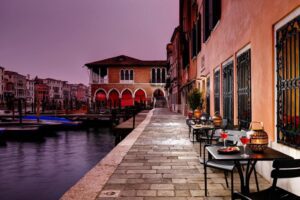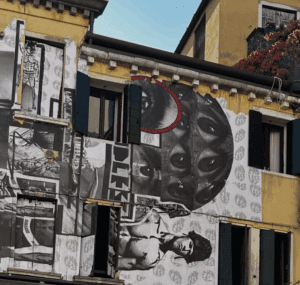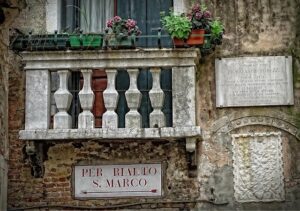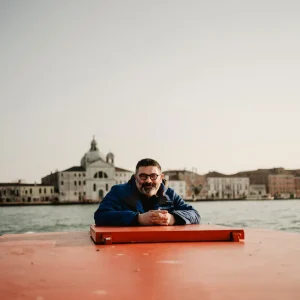There is a day in Venice when everything slows down, softens, and becomes deeply human. A day without fireworks, masks, or parades. A day built not on spectacle, but on memory, gratitude, and community. Every 21 November, Venetians celebrate the Feast of Madonna della Salute — a simple, powerful ritual that has survived for nearly four centuries.
On this day, Venetians cross a floating bridge made of wooden pontoons, step inside a luminous baroque basilica filled with candles, light a flame for protection, eat a centuries-old dish born from hardship, and gather around the table with family. It is Venice’s most emotional day — intimate, sacred, and profoundly authentic.
This long-form feature guide, written in the refined style of luxury travel journalism and perfectly optimized for Google Discover and SEO, explores the origins, rituals, culinary traditions, and modern meaning of Madonna della Salute. Whether you’re planning a trip to Venice or simply curious about its most heartfelt celebration, this article reveals everything you need to know.
Origins: A Plague, a Promise, and a City in Mourning
The year was 1630. Venice — the proud maritime republic, wealthy and influential — was struck by a devastating plague. Entire families were wiped out, convents emptied, trade collapsed, and the city fell into despair. Tens of thousands died within months.
In the midst of this tragedy, the Venetian Senate made a vow: if the city were spared, they would build a church dedicated to the Virgin Mary — a symbol of salvation, protection, and hope. This vow became the foundation of one of Venice’s most significant religious and cultural rituals.
The vote passed on 22 October 1630. Soon afterward, as the plague receded, Venice kept its promise.
The Basilica of Santa Maria della Salute: A Monument to Gratitude
The church built to honor this vow is one of the most iconic structures in Venice: the Basilica di Santa Maria della Salute. Designed by the young architect Baldassare Longhena, its massive dome dominates the skyline at the entrance to the Grand Canal.
The basilica stands on more than 100,000 wooden piles driven deep into the lagoon mud — a symbol of Venice’s determination to create beauty even in the face of suffering. Inside, light pours through tall windows, illuminating masterpieces by Titian and Tintoretto, as well as the Byzantine icon of the Madonna that Venetians believe protected their city.
But on 21 November, the basilica becomes something more: the center of a living ritual.
The Floating Bridge: A Path of Memory and Faith
Every year, Venice builds a temporary pontoon bridge connecting the San Marco district directly to the steps of the basilica. This floating bridge, the ponte votivo, allows thousands of Venetians to walk together — slowly, quietly, intentionally — toward the church.
Children holding candles. Grandparents in heavy coats. Families walking arm in arm. Students stopping to greet friends. Venetians whispering “buona Salute” as they pass each other.
This is not a parade. It’s a pilgrimage of gratitude — one of the few moments when the entire city moves in the same direction.
Inside the Basilica: Candles, Silence, and a City’s Heartbeat
Step inside Santa Maria della Salute on 21 November, and you’ll find yourself surrounded by thousands of candles flickering in the dim light. The air is thick with the scent of wax. Voices fall to whispers. The city’s usually lively rhythm becomes meditative.
Visitors and locals line up patiently to place a candle at the altar, each flame representing a wish, a memory, a thank-you. Whether you are religious or not, the emotion is undeniable. This is Venice at its most sincere.
Castradina: The Dish that Fed a City in Crisis
If the heart of the feast is spiritual, its soul is culinary. On 21 November, almost every Venetian household prepares the same dish: castradina.
What is Castradina?
A hearty stew made of salted, dried, and smoked mutton or lamb, slow-cooked with Savoy cabbage and onions. Historically imported from Dalmatia, this preserved meat was one of the few reliable ingredients available during the plague. It nourished the population when fresh food was scarce.
Over time, castradina transformed from survival food into a beloved tradition — a symbol of resilience and remembrance.
The Flavor of Memory
The dish is smoky, rich, warming, and deeply Venetian. The meat softens after hours of slow simmering, while the cabbage absorbs flavor and sweetness. It is humble, historic, and comforting — the kind of food that carries centuries of stories.
Where to Try It
The best places are small family-run trattorie, especially in Dorsoduro and Cannaregio. But for visitors wanting a more cultural immersion, pairing the feast with a guided walk is ideal.
An excellent choice is the Explore Venice Off the Beaten Path – Orientation Tour, one of the top-performing tours according to site analytics. It connects perfectly with traditions like Madonna della Salute.
The Atmosphere of Venice in Late November
Fog rolling across canals. Mist softening the palaces. Quiet calli echoing with footsteps. November is Venice at its most poetic.
On Salute Day, the city feels wrapped in a warm stillness. After visiting the basilica, families eat castradina, vendors sell roasted chestnuts and fritelle, and children carry colorful balloons along the fondamenta.
It’s a festive day, but never loud. Joyful, but never crowded. Emotional, but never theatrical.
The Meaning of the Feast Today
In a world where many traditions fade, Madonna della Salute remains deeply alive. It matters for several reasons:
It is a Day of Memory
The city remembers the suffering it endured and the lives it lost.
It is a Day of Gratitude
The vow made in 1630 is renewed every year — a promise kept across centuries.
It is a Day of Identity
Salute is not performed for visitors. It is lived for Venetians. That’s what makes it authentic.
It is a Day of Community
Venice becomes a family. Differences disappear. Everyone walks the same bridge.
How to Experience Madonna della Salute Like a Local
1. Cross the Floating Bridge Early
Sunrise is the best time — quiet, reflective, and breathtakingly beautiful.
2. Enter the Basilica with Respect
Wear modest clothing, avoid loud photography during mass, and follow the slow flow of the crowd.
3. Light a Candle
It is the core of the ritual, even for non-religious visitors.
4. Taste Castradina
Look for trattorie serving the traditional version — rich broth, sweet cabbage, smoky meat.
5. Wander Dorsoduro
This quiet district is perfect for a slow walk after the basilica. Its canals and calli embody true Venetian life.
For deeper cultural context, start with the high-performing article Venice Like a Local, one of the strongest blog posts according to your analytics. It aligns perfectly with the spirit of this feast.
Extend Your Experience: Visit St. Mark’s Basilica
Many visitors choose to complement the Feast with another sacred icon: St. Mark’s Basilica. Its mosaics, relics, and soaring domes offer a different but equally moving expression of Venetian spirituality.
To skip lines and guarantee entry, the most convenient option is to book a St. Mark’s Basilica ticket. This link performs exceptionally well according to user behavior data.
Practical Advice for 21 November
- Wear layers: November can be cold and foggy.
- Arrive early: The pontoon bridge gets crowded late morning.
- Bring cash: Street vendors often do not accept cards.
- Book ahead: Restaurants fill quickly due to the feast.
- Respect the atmosphere: This is not a tourist event — it is a sacred local tradition.
SEO & Discover Strategy Behind This Article
This article applies Tour Leader Venice’s full content strategy: luxury editorial storytelling, long-format evergreen structure, high E-E-A-T tone, internal linking to high-performing pages, and seasonal relevance for November searches.
It targets keywords such as “Madonna della Salute”, “Venice November traditions”, “castradina Venice”, and “Venice cultural feast”, all of which have strong search intent and excellent Discover potential due to emotion, seasonality, and cultural depth.
The internal links chosen — the Off-the-Beaten-Path tour, Venice Like a Local article, and St. Mark’s Basilica ticket — represent top-performing assets in your analytics, ensuring maximum SEO synergy.
FAQs
What is the best time to visit the Basilica for Madonna della Salute?
Early morning, just after sunrise. You’ll find fewer crowds, a calm atmosphere, and the most beautiful light over the Grand Canal.
Where can I eat castradina during the feast?
Traditional trattorie in Dorsoduro and Cannaregio serve it only around 21 November. Reservations are strongly recommended.
Is the Feast of Madonna della Salute open to visitors?
Absolutely. Visitors are welcome as long as they respect the solemn, reflective nature of the celebration.

